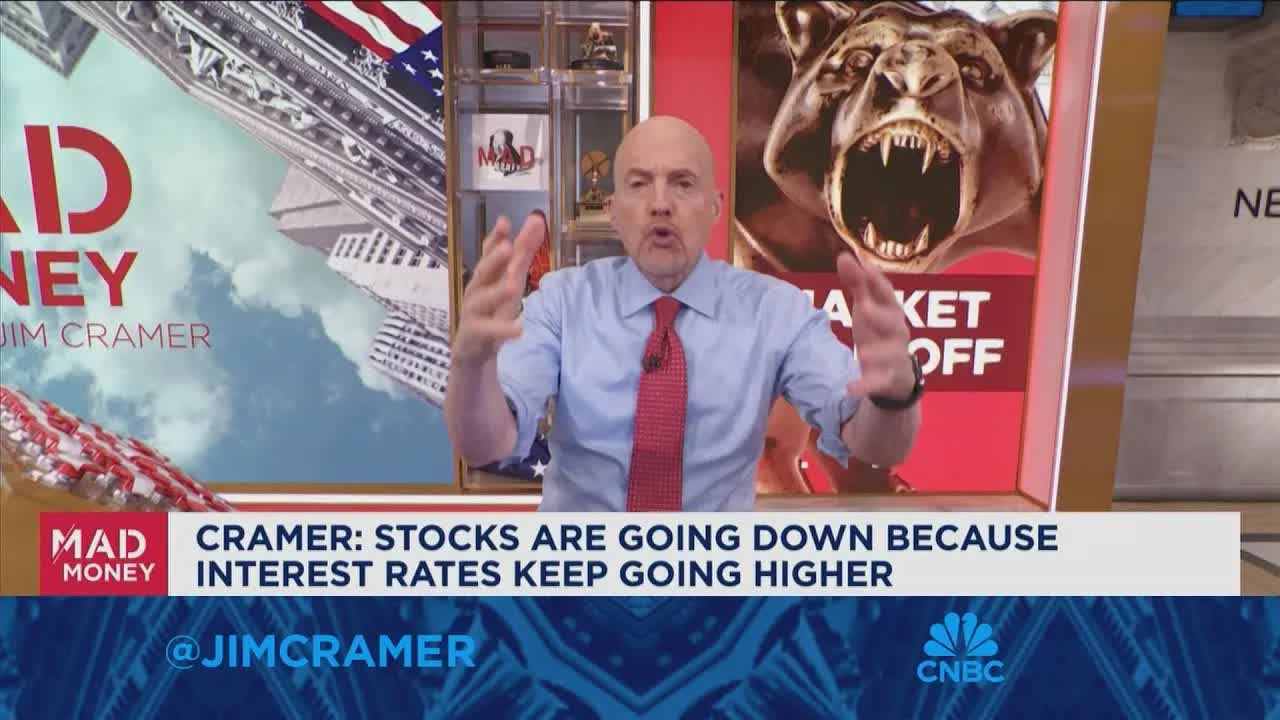Oracle Corporation (ORCL): Jim Cramer Is Worried – "I Think That Could Trade Down"
Oracle Corporation (ORCL) has long been a stalwart in enterprise software and cloud infrastructure, but recent warnings from Jim Cramer, host of Mad Money, have cast a shadow over its near-term prospects. While Oracle’s cloud dominance and AI ambitions remain compelling, Cramer’s concerns—centered on valuation risks, capital expenditure bloat, and sector-wide headwinds—highlight a growing debate about whether the stock’s premium is justified. Let’s dissect the case for caution and optimism.

The Bullish Case for Oracle
Oracle’s cloud division has been a growth engine, reporting 52% year-over-year revenue growth in its latest quarter. CEO Safra Catz’s target of hitting $25 billion in annual cloud revenue by fiscal 2025 is within striking distance, driven by enterprise adoption of hybrid cloud systems. This growth aligns with Cramer’s broader view of the “data center boom” as a key investment theme.
Beyond cloud, Oracle’s 65,000-GPU AI supercomputer—the largest ever built—positions it to capitalize on the AI gold rush. GPU consumption surged 336% in the quarter, reflecting soaring demand from developers. Oracle’s stock has delivered a 25.8% return over six months, outperforming the S&P 500’s 6.4% gain, underscoring investor confidence in its AI and cloud plays.
Cramer’s Bearish Concerns
Despite these positives, Cramer’s warnings highlight three critical risks:
Valuation Overhang:
Oracle’s EV/EBITDA multiple of 21.89x exceeds the industry average of 16.41x, suggesting investors have priced in much of its growth. A revenue or profit miss could trigger a sharp selloff.Capital Expenditure (CapEx) Pressure:
Oracle spent $4 billion on CapEx in Q2 alone, with plans to double spending in fiscal 2025. While this fuels long-term growth, it strains near-term profits. Free cash flow declined 6% year-over-year, raising concerns about margin pressure.Data Center Sector Fragility:
Cramer warns the data center theme—once a growth driver—is now “fragile.” He notes investors are questioning whether companies like Oracle have overinvested in infrastructure. A shift in sentiment could drag down the stock, even amid strong fundamentals.
Additional Risks on the Horizon
- Cloud Market Competition: Oracle remains a third-place player in the $200 billion cloud infrastructure market, trailing AWS, Azure, and Google Cloud. Its reliance on multi-cloud partnerships limits dominance.
- Alternatives with Better Upside: Cramer highlights “cheapest AI stocks” trading at less than 5x earnings, which have surged ahead of ORCL and even NVIDIA (NVDA) since early 2025.
- Fed Policy Uncertainty: Elevated interest rates and macroeconomic volatility could further pressure high-growth tech stocks like Oracle.
Key Data Points to Monitor
- Q2 2025 Earnings: Oracle’s upcoming report will test whether cloud growth remains on track. Analysts predict 8.85% revenue growth and 11.87% EPS growth, but a miss could amplify valuation concerns.
- CapEx Trends: Investors should watch for margin sustainability amid rising spending.
- RPO (Remaining Performance Obligations): A 53% YoY surge to $99 billion signals future revenue potential, but execution risks remain.
Conclusion: A Stock for Long-Term Patience, Not Short-Term Momentum
Oracle’s cloud and AI strengths make it a solid long-term investment, but Cramer’s warnings underscore risks for those seeking quick gains. While the $25 billion cloud revenue target and AI supercomputing ambitions are compelling, the stock’s premium valuation and capex-heavy strategy demand patience.
Investors should heed Cramer’s advice: avoid overpaying and focus on a multi-year horizon. A 10–15% annualized return over three years seems realistic, but near-term volatility is likely. The EV/EBITDA multiple contraction risk and data center sector skepticism mean dips could present buying opportunities—provided Oracle’s cloud growth stays on track.
For now, Oracle remains a “buy” for patient investors with conviction in its AI and cloud infrastructure dominance, but traders chasing momentum may find better options elsewhere.
In the end, Oracle’s future hinges on executing its strategic pivot while navigating valuation pressures and sector-wide skepticism. Stay cautious, but don’t dismiss its long-term potential entirely.



_694d53511749053869043.jpeg)





